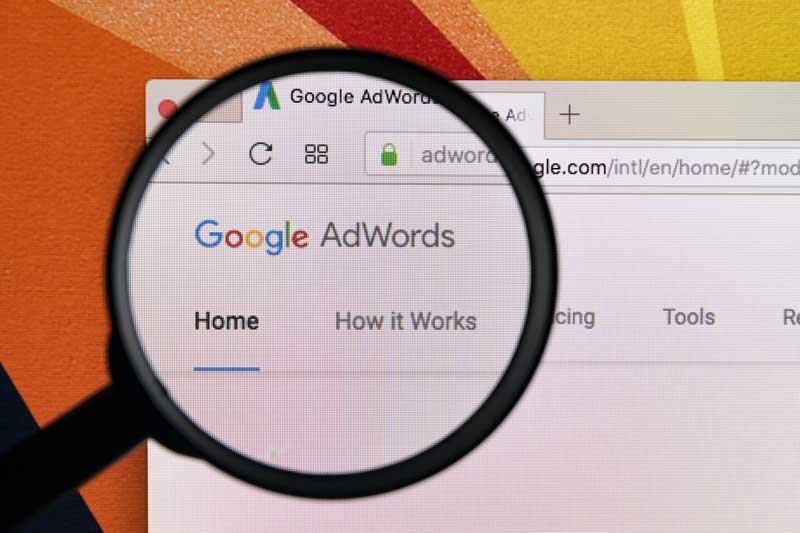How To Improve Google Ads Click Through Rate
Google adverts can be a complete waste of your time and money if they’re not done well, but a properly optimised campaign can have a truly astonishing return on investment. The key to success is, in large part, decided by your click-through rate (CTR).
In this article, we offer 10 suggestions to teach you how to improve Google Ads click through rates.
Why CTR is crucial for Google Paid Ads?
Contents
If you’re going to spend your marketing budget on Google ads, you must track the success of each ad. One of the most important metrics to consider is your click-through rate (CTR). The higher your CTR is, the more efficient the ad spend will be.
The goal of a paid advertising campaign should always be to get the most leads to your business at the lowest price possible, allowing you to maintain the most amount of profit from the eventual sale. The more clicks your ad gets, the better your quality score will become and this will directly affect how much you pay for each click, or lead.
How To Improve Paid Advertising CTR?
1. Optimise Your Ad Copy
One of the first components of your ad that you should focus your energy on is the copy. There is power in words and when you’re limited to very few words, you have to be sure every single one is having the highest impact that can be created.
Your ad copy should capture attention, pique interest, and demand the viewer takes action.
For most ads, you have a headline, a short space for body text, and a call to action to achieve all of these goals.
2. Use a Persuasive CTA
Your call to action is more than just Ad Copy, it should be explicit instructions telling the viewer exactly what action they need to take next. The CTA should be clear, concise, and compelling.
Your words are important, but so are the colours you use and the design that surrounds and is part of your CTA. There should be no room for confusion or hesitation, and the CTA needs to be highly visible and baiting.
3. Use Ad Extensions Strategically
Google Ads offers ad extensions to help you make your ad more specific to the type of content and advertisement you’re creating, as well as make the conversion of your choice as easy as possible. By providing the exact type of information that suits your ad, users will immediately have more confidence and interest in your ad because they are more relevant to the viewer.
Some of the most common types of ad extensions include:
- Siteline ad extensions
- Call extensions
- Promotion extensions
- Price extensions
- Location extensions
- And others
You can not only experiment with different types of ad extensions, but you can also use expanded ads to give you more space for your ad copy.
4. Monitor Your Results Consistently
One of the most underutilised methods of improving CTR is simply monitoring your ads and adjusting when necessary. Google ads are not designed to be “set and forget” marketing campaigns. If you want to maximise your return on investment, you need to double down on strategies that work and eliminate or alter underperforming strategies.
You should always be monitoring your bids, tracking your keywords and conversions, and, of course, watching and analysing your CTR closely.
5. Optimise Your Quality Score
Optimising Google Ads will present you with a Quality Score for each keyword in your account. Google essentially analyses each of your keywords and assesses how likely it believes a viewer will be to click on your ad and how relevant the resulting experience will be for the customer.
The Quality Score takes into consideration your landing page’s relevance to the keywords you are targeting and how closely related your ad copy is to the keywords, among other elements.
The more Google believes you are serving the customer’s needs, the higher your Quality Score will be. This can help lower your cost per click, give your ad higher rankings and improve viewability and positioning and, ultimately, improve your CTR.
6. Group Your Ads and Keywords
You can create themes for your ad groups to help you group related and relevant keywords together. This will give you the ability to create ad copy, designs and even bespoke landing pages that are very targeted to the keywords within a specific ad group. As you’ve probably realised by now, that can help boost your Quality Score and therefore CTR.
A carefully moderated ad group will also help you make sure your copy actually contains the keywords you targeting, without sounding stuffed or awkward.
7. Bid Smart
Deciding how much to bid is one of the more stressful parts of a campaign for many marketers, and doing this strategically can significantly impact your CTR and overall ad success.
Google does offer a lot of help, including “smart bidding” capabilities. With smart bidding, Google uses their own data and analytics to only enter your ad into auctions that are highly targeted and relevant, making your ad more likely to gain a click.
Unless you’re a master of analytics, ad campaigns, copy, design, and sales, putting Google’s world-leading expertise in this field to use is a great strategy.
8. Test Ad Types
As previously mentioned, there are many different types of ads that you can run, including Responsive ads, which allow you to adjust your headlines and descriptions so that they are displayed differently in different circumstances. If you use this to your best advantage, you can make your ad copy and design more relevant to specific searches, improving your CTR potential.
You can also try Discovery ads that are designed specifically with mobile browsers in mind.
Google offers tools such as “Ad Strength” recommendations that help you customise your ad and improve its effectiveness.
9. Split Test
If you’re testing different types of ads, as well as different ad copy, designs, and keyword strategies, you should always be monitoring the results and, ideally, conducting split testing experiments.
You can split-test within ad groups by creating small variations to see which version has the highest CTR.
With this information, amassed over a reasonable amount of time, you’ll be able to do more of what is working and less of what is not bringing the results you’re looking for.
10. Re-market Your Audiences
Another underutilised technique for improving CTR is creating remarketing campaigns. Using a tracking code, you can target select audiences who’ve either seen or interacted with your content before and provide them with customised messages and adverts.
You can also use remarketing data to avoid wasting money on displaying your ad to audiences who are less likely to convert.
To be successful at remarketing you will need to truly understand the metrics you’re tracking so that you can best address the needs and desires of your highly targeted audience.
Concluding Statement
There is no exact formula or equation that can be applied to managing Google adverts, but improving your CTR is one way to improve your return on investment significantly. If you want to be sure you’re investing your marketing budget in ads that are optimised for success, Riordan SEO is ready to help you get your campaign producing results.

Director of Thrive Digital & Riordan SEO, Fintan is a digital marketing expert with over a decade of experience. He holds a Level 8 Higher Diploma in Web Technologies from the National College of Ireland and has a proven track record of delivering innovative SEO strategies for clients ranging from global organisations to local businesses.

